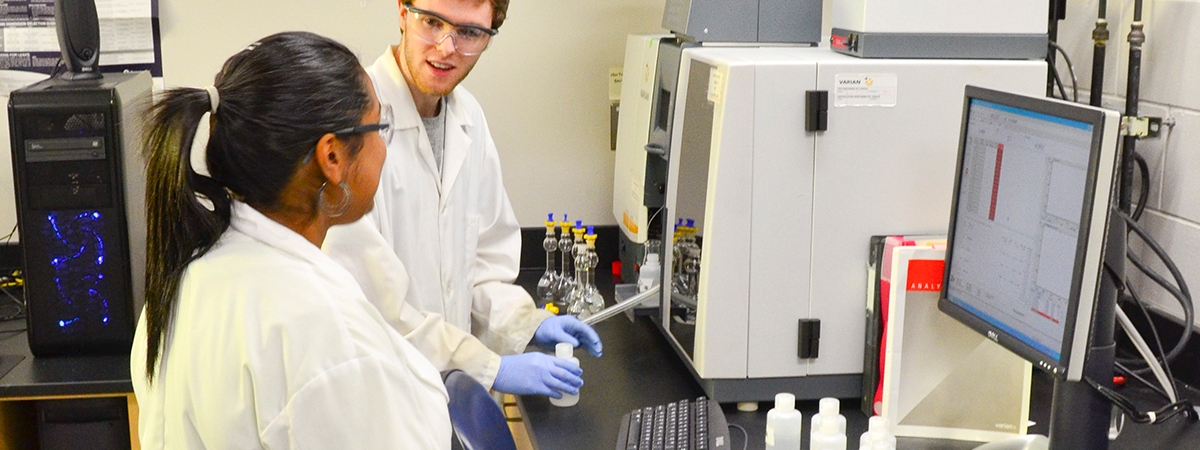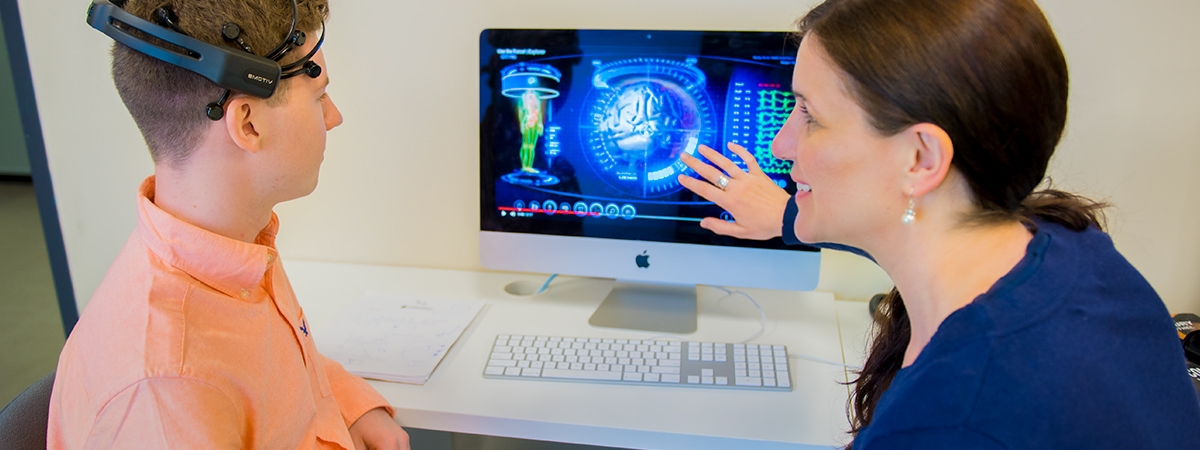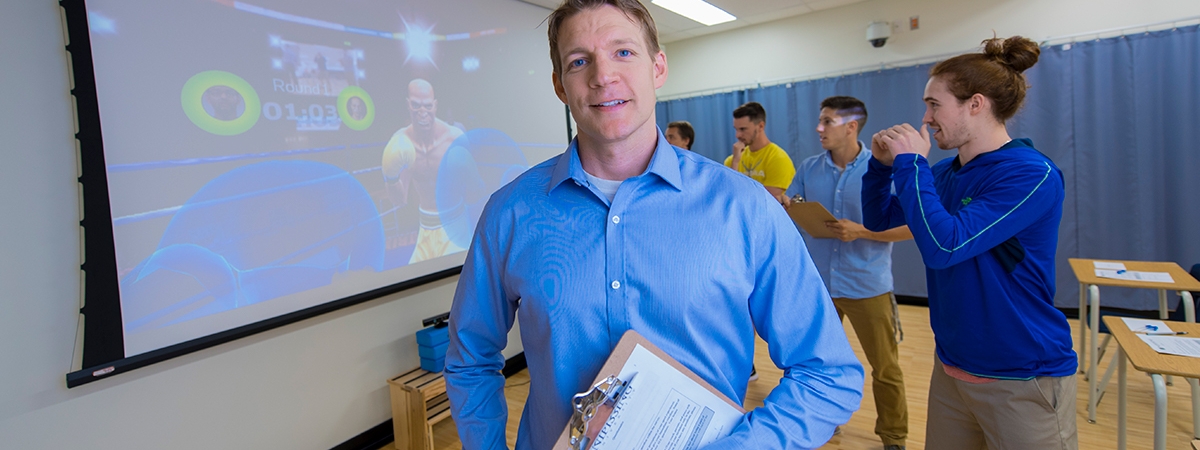Research at Nipissing University
Nipissing University’s Strategic Research Plan (SRP) is designed to catalogue present research strengths, identify areas for investment and reinvestment, and encourage future research directions. At the center of these efforts is recognition that Nipissing University is situated on the traditional territory of the Anishinabek peoples of Nipissing First Nation and within the lands protected by the Robinson Huron Treaty of 1850.
While our researchers have and will continue to achieve research success in many different ways, our research culture must also make a special commitment to highlight the relevance of regional Indigenous knowledge, history and perspectives in relation to the national and international environment. It is through this approach that a growing number of Nipissing researchers have been able to build upon regional community engagement and reciprocal relationships with Indigenous communities toward achieving research excellence.
Our approach to research is founded upon the values of inclusivity, equity and diversity directed by a culture of openness, fairness and tolerance. In turn, we strongly commit to the overarching idea that quality research is an outcome of sharing diverse ideas, experiences, perspectives, and different senses of place.
Strategic Research Plan 2019-2024
Pillars
The Strategic Research Plan has been structured upon four main pillars: Identify, Encourage, Support and Oversee.
Along with defining the character of each pillar, a number of associated objectives are provided and then, more specifically, strategies and/or policies that will be implemented over the time horizon of the plan. The effort has been to avoid platitudes and generalizations and focus on tangible opportunities to maintain and improve research success at Nipissing University.
While individual researchers will always be the most aware of and focused upon their own work, the overarching goal of this plan is to grow a research culture that engenders a high-quality and quantity of research success.
The Provost, the Dean of Graduate Studies and Research, and the Research Council, among other stakeholders and experts, will assist in the development and implementation of the listed strategies and policies.
Pillar 1: Identify
The most basic component to any successful research institution is to have full knowledge of the character and kind of research occurring and emerging.
Year 1 Objectives
Awareness of research expertise - Working on an annual basis, compile a comprehensive list of areas of research expertise for individual researchers.
Understanding of publication success and other areas of scholarship and knowledge dissemination - Working on an annual basis, utilize databases and submissions by individual researchers to accumulate and catalogue recent publications, scholarship and other form of knowledge dissemination.
Accounting for ongoing and developing research projects - Develop a reporting mechanism to provide summaries of current research projects, whether funded or unfunded.
Recognizing collaborations - Maintain an up-to-date list of individual and institutional research collaborations.
Year 2 Objectives
Review of research Labs, Centres and Institutes - Under the current policy on labs, centres and institutes, provide a centralized and comprehensive account of current work and funding.
Assessing Research (Space/Equipment) Infrastructure - Informed in part by the 2017/2018 space audit, develop a infrastructure accounting policy that provides comprehensive picture of current research infrastructure.
Evaluating link between research and classroom success - Within the new Teaching Chair framework, pinpoint ways researchers integrate their research into the classroom.
Assessing funding success - Develop a policy on non-Tri-Agency grant application and reporting toward a full accounting of funds awarded to our researchers.
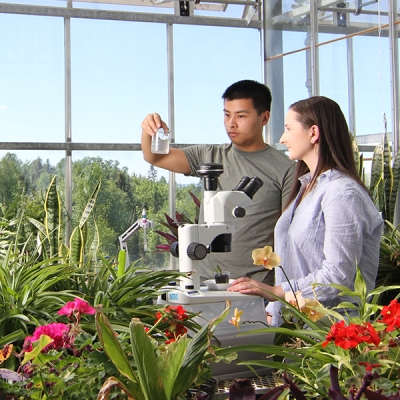
Pillar 2: Encourage
With full knowledge of the dynamic research profile of the institution, we must be focused on maintaining and growing current research success and developing areas of future success.
Year 1 Objectives
Informing researchers of projects and collaborations - Proactively notify faculty researchers of relevant work in their field.
Year 2 Objectives
Awareness of external funding opportunities - Develop a targeted individual researcher funding strategy that links researchers with funding programs and projects.
Review of internal funding programs - Assess the success rate of our current internal funding programs in relation to later external funding achievements and recast programs if necessary.
Communicate research success - Work with communications and public relations to develop a strategy to comprehensively promote research success and expertise. Provide mass and social media training to allow individual researchers to better promote their research success and expertise.
Celebrate research success - Develop a targeted strategy for the Chancellor’s Research Award that increases the monetary value but also the associated responsibilities of the holder (e.g. mentorship, research talk).
Year 3 Objectives
Mentoring new faculty researchers - Working with CRCs and the Assistant Dean, create a targeted or linked mentoring program that will give faculty the opportunity to work with established researchers to develop projects and grant applications. Integrate mentoring into the Teaching Chairs framework.
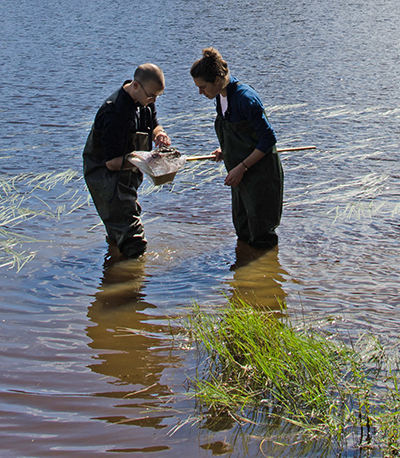
Pillar 3: Support
The acquisition and distribution of resources is the most tangible component of research success. Composed of financial and human resources as well as related infrastructure, a healthy research culture requires proper targeting, transparency, consistency and creativity.
Year 1 Objectives
Stabilizing and Enhancing the Undergraduate Research Conference
- Develop a defined policy and steering committee for the undergraduate research conference.
- Review the funding requirements of the conference and provide consistent annual funding.
Year 3 Objectives
Utilizing our Canada Research Chairs to support faculty, graduate, and undergraduate research
- Develop a CRC internal partnership program that will support relevant faculty, post-doctoral and student involvement in ongoing and emerging research projects.
- Develop an exit strategy and succession plan for CRC program.
Year 4 Objectives
Providing targeted internal research funding
- Establish a new program for research projects that engage with regional partners and communities, in line with the broader goals of the Strategic Plan.
Expanding and focusing Research Services
- Under the leadership of the Dean of Graduate Studies and Research, reinvestment in staff specifically targeted toward external research fund success.
Year 1-5 Objectives
Targeting Infrastructure Funds
- Informed in part by the 2017/2018 space audit, develop a research infrastructure funding strategy that addresses current and emerging needs.
- Develop a transparent internal application and granting process for CFI funds.
- Work with the Provost and the VP Finance to use fundraising to increase donations for research infrastructure projects.
Enhancing support for graduate student research
- Undertake a review of graduate student support with the Provost and the Faculty of Graduate Studies.
- Work with the Provost and VP Finance to use fundraising to increase donations for graduate research.
- Improve competitiveness in recruiting graduate students by enhancing financial packages and infrastructure dedicated to graduate research.
Pillar 4: Oversee
The intellectual and societal importance of university research demands that processes and outcomes must meet the highest of professional and ethical standards. Beyond a mere demand for compliance, a healthy research culture recognizes the link between individual and institutional reputation.
Year 1 Objectives
Maintain high standards - Review and articulate a broad policy statement on Responsible Conduct of Research.
Year 2 Objectives
Renewing the mandate of the Research Council - In conjunction with Senate, review and recast the terms of reference of the Research Council.
Year 1-3 Objectives
Publishing high-quality, impactful work - Work with the Executive Director, Library Services and the Scholarly Communications and Research Data Management Librarian to develop an education strategy on how to assess research impact (i.e., knowledge translation). Work with the Provost and the Deans to develop education processes to ensure research publications meet the standard of peer-review.

